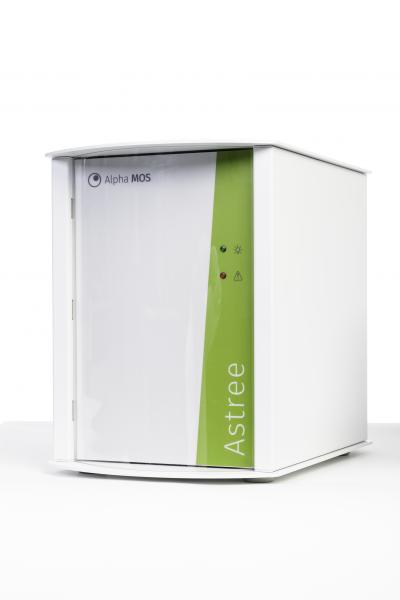Description
ASTREE,
taste sensors electronic tongue
The remarkable benefits of ASTREE electronic tongue
The use of an instrument like the electronic tongue for the sensory analysis of taste allows our customers to:
- Make sensory evaluation more reliable within their company thanks to an automated, objective and reproducible measurement
- Control the sensory characteristics of their products thanks to a detailed knowledge on taste attributes
- Assure assessors’ safety by avoiding exposing them to potentially dangerous or unpleasant substances.
ASTREE: unsurpassed technical performance
Based on a technology of ChemFET liquid sensors and a conductivity measurement, the electronic tongue evaluates the taste of products. This analytical instrument features unique technical characteristics to achieve unsurpassed performance in taste analysis globally and also for some taste attributes (salty, acid, umami):
- Evaluation of taste fingerprint : the electronic tongue detects all organic and inorganic compounds responsible for taste in liquids. With hits specific data processing software based on multivariate statistics, the instrument can assess the overall taste profile, just as the human tongue does.
- Quantitative analysis capabilities: with the electronic tongue sensors it is possible to simultaneously rank similar samples according to the intensity of salty, acid and umami attributes.
- Objectivity of the measurement for taste analysis: the use of an instrument like the electronic tongue to assess the taste in controlled and automated conditions assures repeatable, reproducible and totally objective results
- Rapidity and high throughput of analysis : ASTREE electronic tongue autosampler allows to automate an analysis sequence of a set of samples, with a sample analyzed every 3 minutes.
Thanks to a high reliability of taste measurements, ASTREE electronic tongue can thus substitute to a sensory panel for some routine tests that can be difficult or that can raise safety issues linked with the presence of potentially harmful.
AlphaSoft,
Sensory Analysis Software
AlphaSoft software operates all Alpha MOS instruments:
- HERACLES electronic nose
- ASTREE electronic tongue
- IRIS electronic eye.
It allows to monitor instruments settings, define analysis methods and sequences, run analysis and perform data acquisition.

It also achieves the data processing of Alpha MOS instruments measurements, using different models based on the application:
- Qualitative models: comparison of several samples on overall odor/taste/visual aspect, samples classification based on a criterion, quality/conformity control, shelf life monitoring
- Quantitative models: prediction of measurable parameters such as a concentration or a sensory attribute intensity.

Data processing modules (statistics packages, AroChemBase) can also be used to compute data from other analytical instruments.
AlphaSoft anticipates maintenance needs and avoids losing time on lab activity.
Thanks to this unique software platform, it is possible to combine HERACLES, ASTREE and IRIS results to have an overall point of view of products sensory features.
Applications:
the electronic tongue for taste analysis
The applications of the electronic tongue for evaluating the taste of products are numerous in the industry because taste attributes composing the sensory profile of products are key factors for their success among consumers. Thus, industrials frequently use taste analysis, during the formulation or the product development steps.

An optimized taste analysis with the electronic tongue
The sensory profile and particularly the taste of products have a strong influence on consumers’ choice and preference. The electronic tongue, by providing objective and reproducible taste measurements, is a precious tool to help formulate or develop a new product that will appeal to consumers:

- Recipe optimization to reach a specific taste
- Conception of an innovative product with totally unique taste
- Re-development of product (retro-engineering) to change or improve its savour and taste characteristics
- Benchmarking of competitive products based on their sensory profile and their taste attributes
- Change of manufacturing process or ingredients substitution and evaluation of the impact on product taste
- Evaluation of a new product at different ageing steps to follow-up taste stability over time
- Comparison of different formulations to select the one that best masks an unwanted taste
- Quantitative taste analysis in correlation with a sensory panel.
More detail about SCIENCEGATES SDN BHD




 Malaysia
Malaysia